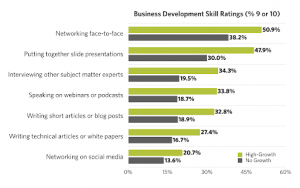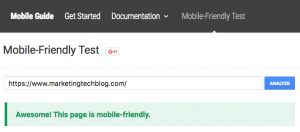
If you’re using content marketing to expand your audience, generate brand awareness, and attract prospective customers, you’re likely leveraging a number of channels to promote that content.
Most of these channels allow you to show your content to people who you think would be interested in it — your Facebook fans, Twitter followers, blog subscribers, or a retargeting audience of folks who have visited your website.
These are all great channels to leverage! But when it comes to content promotion, we often forget to include search campaigns in our list of options.
Google AdWords campaigns allow you to show your content to people who are searching for keywords that are relevant to that content. By running AdWords, you’re able to capitalize on the intent that this audience is showing to learn more about a certain topic.
Intent, meaning because they’re in “search mode” instead of “discovery mode” (as they would be if they were, say, scrolling through their Facebook news feed), these folks may be more likely to click through and convert, given that your content is solving an immediate need they have.
So, how exactly do you go about setting up an AdWords campaign to promote your content? Take a look at these 4 steps.
4 Steps to Set Up A Content-Focused AdWords Campaign
1. Start with keyword research.
Before you create any campaigns, the first thing you’ll want to do is some keyword research. Use this guide to walk through the process of identifying high-potential keywords to use in your campaign.
This guide explains how to use the Keyword Planner tool in AdWords to generate ideas, and then refine your list based on search volume and competition.
Make sure you choose keywords that are closely related to the piece of content you’re planning to promote.
2. Create an optimized landing page.
You’ll need to direct your ads to a landing page where people can view or download your content.
Before creating your ads, make sure that your landing page is both optimized for SEO and optimized for conversion.
This is a great opportunity to incorporate your keyword research into your landing page. By targeting specific keywords in the SEO elements of your page (such as page titles, headers, meta descriptions, and more), you accomplish two important goals:
- You improve your likelihood of having that page rank organically in search results.
- You improve your ad quality scores, which factor in how closely your keywords, ad copy, and landing page copy tie together. Higher quality score means more impressions for your ads, and generally speaking, better performance and results.
3. Create an Adwords campaign.
Start by creating a new campaign in AdWords. I’d recommend beginning with a “Search Network Only” campaign, since you’ll be focused on targeting search keywords for now.
Once you’ve customized your settings and set your bid and budget, the next step will be to create an ad group within that campaign. (If you’re unfamiliar with how AdWords structures campaigns, ad groups, and ads, check out this guide to learn more.)
When you create your first ad group, select a handful of keywords that you’d like to target that are closely related to one another. Keep in mind: if you only have a few ad groups with multiple keywords each, this doesn’t let you target your ad copy as closely to your keywords. However, if you have dozens of ad groups with only a few keywords each, you can target your ad copy much more closely, but now you have a lot more ad groups to manage. Try to strike a balance between the two.
Once you’ve input your keywords, the final step will be to create your actual ads.
Here are a few tips to help you craft some well-optimized ads:
- Use the keywords you’re bidding on in that specific ad group in the headlines of your ads.
- Include a clear call-to-action in the body content of your ads.
- Follow Google’s guidelines to avoid having your ads disapproved.
Also, be sure to set up at least a few different ad variations in each ad group, so you can test various headlines, copy, and display URLs against each other and see which ones yield the best results.
4. Measure your results and optimize accordingly.
Don’t forget, your ultimate goal of running these campaigns is to increase conversions – in this case, content downloads. Beyond just monitoring your AdWords metrics, like click-through rate, cost-per-click, and average position, make sure you’re also measuring the number of conversions your ads are driving and your cost-per-conversion.
These metrics will help you determine the effectiveness of AdWords as a content distribution channel for your company.
And of course, be sure to use the insights from your data to continue optimizing your campaigns and improving your results!
*All images via Google AdWords
Digital & Social Articles on Business 2 Community(47)









